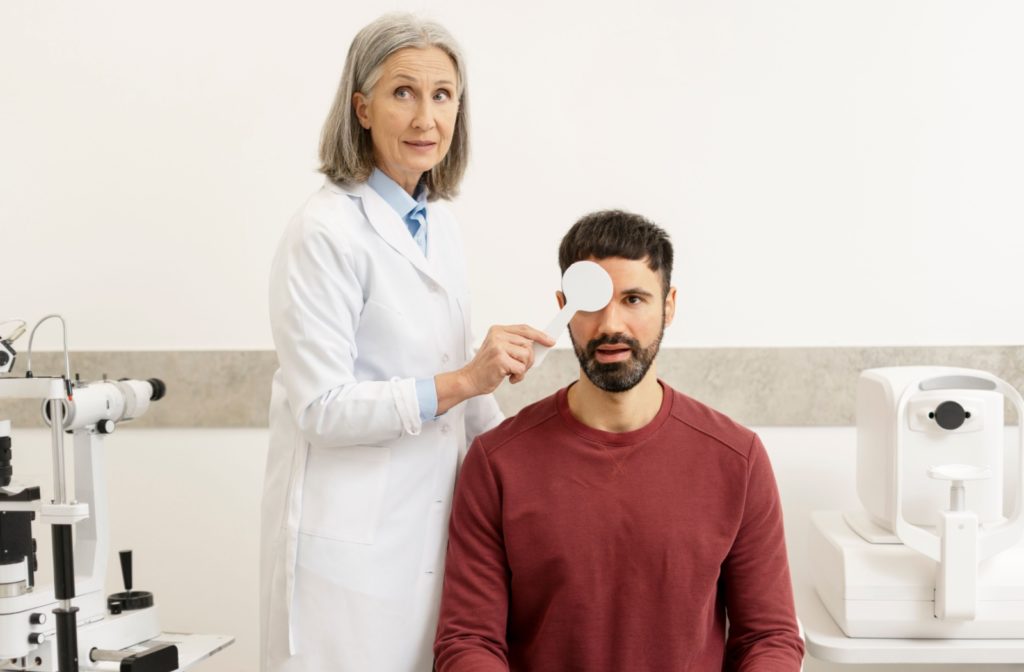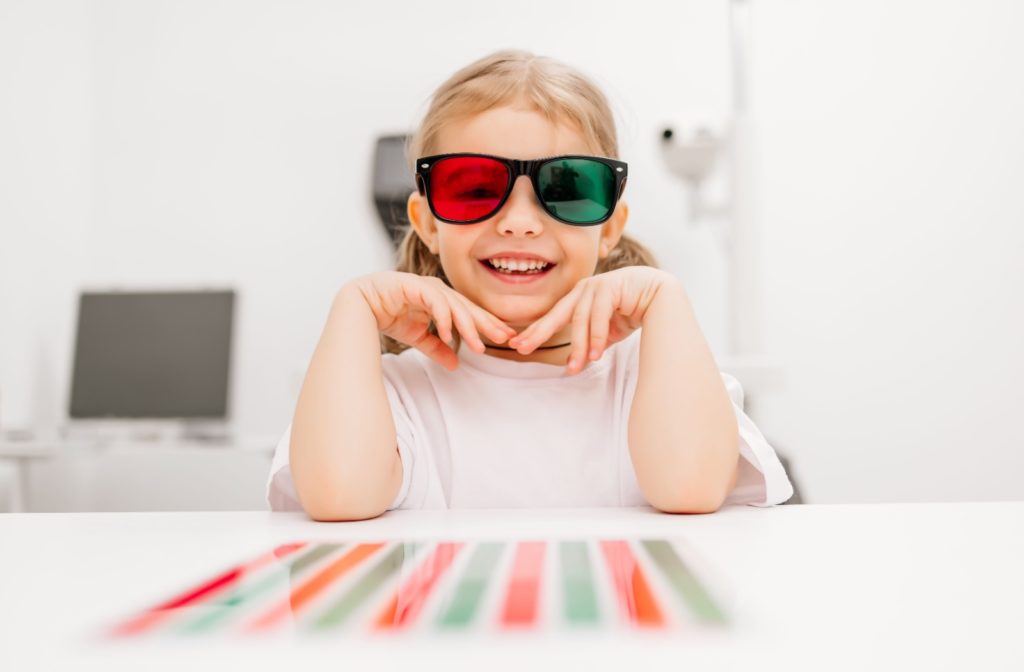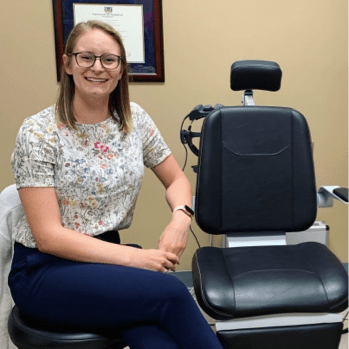Visual training, or vision therapy, is a structured, customized program designed to enhance visual skills and address vision-related challenges by strengthening communication between the eyes and brain.
Eyeglasses and contact lenses correct issues like nearsightedness or farsightedness, but visual training focuses on improving the visual system’s performance as a whole.
How Visual Training Works
Vision therapy typically involves in-office sessions with a specialist and at-home exercises to reinforce skills. Using tools such as lenses, prisms, filters, and specialized computer programs, a vision care professional creates a custom plan based on the individual’s needs.
The goal is to strengthen connections between the eyes and the brain, addressing a range of functional vision problems, including poor eye coordination, focus, and tracking.
For example:
- Eye teaming exercises help improve eye coordination, addressing issues like double vision caused by eyes that do not work together properly.
- Tracking activities help develop the ability to follow moving objects, a critical skill for activities such as reading or playing sports.
- Focus adjustment exercises enhance the eyes’ ability to shift quickly and smoothly between near and distant objects.
Who Benefits from Visual Training?
Vision therapy can benefit both adults and children with various issues, from correcting vision-related learning disabilities to boosting athletic and workplace performance. Here’s a closer look at who might benefit from visual training.
Children Struggling with Learning & Development
Visual skills are vital for children in all aspects of life. Activities like reading, writing, and copying from a whiteboard rely on clear vision and effective visual processing. Playing sports or with friends and socializing can also be challenging if underlying vision problems exist.
Children with visual coordination conditions, such as strabismus or amblyopia, or issues with eye tracking, may find many tasks challenging, which can lead to problems in and out of school.
Visual training can help improve:
- Reading fluency by supporting tracking and eye movement control.
- Attention and focus by reducing visual distractions.
- Comprehension and memory by strengthening visual processing.
- The frequency of letter and number reversals by addressing visual spatial skills.
By helping a child feel more comfortable and confident with visual tasks, you are giving them the chance to overcome the difficulties they face in school, which can help improve their academic performance.
Eye Strain

Modern work environments often require prolonged screen use, which can strain your eyes and lead to symptoms such as:
- Frequent headaches
- Eye fatigue
- Difficulty focusing on screens
These issues may stem from underlying binocular vision problems, which occur when the eyes struggle to work together. Binocular vision impacts critical functions like depth perception, spatial awareness, and the ability to shift focus between distances.
Vision therapy can help improve visual functioning and reduce the strain the eyes experience when working on digital screens.
Brain Injury
Brain injuries, like concussions, strokes, or neurotoxin exposure, can disrupt the connection between your brain and eyes, leading to visual problems. Up to 90% of traumatic brain injury patients experience some form of visual dysfunction, including:
- Difficulty focusing or tracking objects
- Light sensitivity
- Visual processing errors
- Impaired depth perception
Vision therapy can help retrain the brain and eyes to work together again, improving visual function and quality of life for those who have experienced a brain injury.
Athletes Seeking to Enhance Performance
Visual training has gained popularity among athletes looking for a competitive edge. Sports like baseball, basketball, and tennis rely heavily on hand-eye coordination, quick reaction times, and accurate depth perception—all of which can be improved with targeted visual exercises.
Visual training can help:
- Track a fast-moving ball.
- Anticipate an opponent’s movements.
- Sharpen reaction times for better on-court decisions.
Common Conditions Addressed by Visual Training
Visual training improves existing visual skills and can be used to treat specific vision-related conditions.
Strabismus (Crossed Eyes)
Strabismus results in eyes that aren’t properly aligned. It can cause double vision, or lead to the brain suppressing the image it sees in one eye to help reduce double vision. One eye may turn in a different direction than the leading eye. Strabismus won’t go away without treatment, and if left untreated, it can cause double vision or may result in amblyopia (lazy eye).
Amblyopia (Lazy Eye)
Amblyopia occurs when one eye does not see as well as the other, even when wearing glasses. It’s usually due to abnormal visual development during childhood. The brain will favour the stronger eye, which can cause vision in the weaker eye to get worse.
Binocular Vision Disorder
Binocular vision disorder occurs when the eyes have difficulty working together. Vision therapy focuses on improving the coordination and efficiency of eye movements. It can help reduce or eliminate uncomfortable symptoms, such as poor depth perception, headaches, and eyestrain.
What to Expect in a Visual Training Program
Visual training begins with a comprehensive eye exam conducted by a vision care professional. They will assess your visual skills and identify any limitations. If your eye care provider determines that visual training is the right choice, they’ll create a personalized program tailored to your needs.
- Initial evaluation: Your vision care professional will conduct specialized tests to pinpoint which visual skills need improvement.
- Custom plan development: Based on your results, a custom vision therapy plan will be created, highlighting specific exercises and tools to address your goals.
- Regular sessions: Attend in-office training sessions, where a professional will guide you through activities and monitor your progress.
- Home exercises: Continue exercises at home to reinforce what was covered in sessions.
Get Started with Visual Training
Whether you’re helping a child overcome learning challenges, recovering from an injury, or simply looking to sharpen your eyesight for an activity you love, personalized visual training programs offer real, measurable benefits. Our team at Beyond 20/20 Optometry offers comprehensive visual training services for several visual conditions. If you or a loved one would like to explore the benefits of vision therapy, book an appointment with us today




